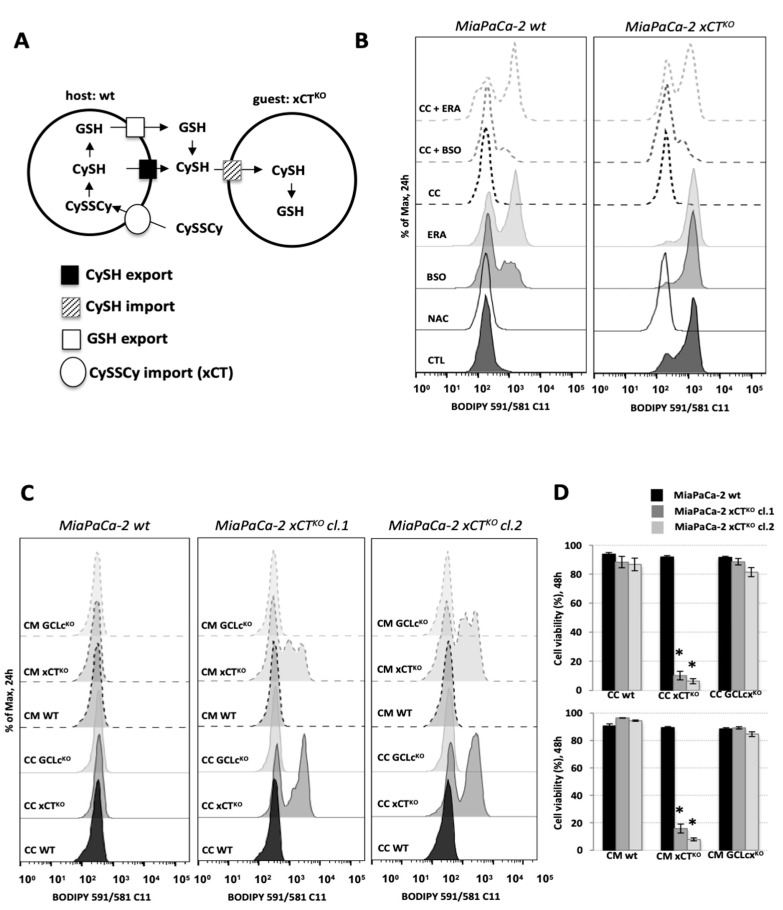Figure 3.
Cystine-cysteine shuttles fuel cooperation between WT and xCTKO cells. (A). Schematic representation of the cystine-cysteine (CySSCy, CySH) shuttle: xCT-expressing cells (“host”) are able to import the oxidized form of cysteine, reduce it and export it. Or, in the alternative scenario, the “host” cells can synthesize and export glutathione (GSH), which then will be cleaved outside the cell to the constituent amino acids. Cysteine provided in one or both ways is taken up by the xCTKO cells (“guests”) maintaining the amino acid and redox balance. (B). MiaPaCa-2 wt or xCTKO cells alone (full outer lines of the histograms) or in the co-culture with A549 wt (CC—dashed outer lines of the histograms) counterparts in DMEM media +/− 1 mM N-acetylcysteine (NAC), 100 μM inhibitor of GSH biosynthesis (buthionine sulphoximine, BSO) or 1 μM inhibitor of xCT, erastin. (C). Accumulation of lipid hydroperoxides and (D). Cell viability of MiaPaCa-2 xCTKO cells in co-culture (CC) or cultivated in the presence of conditional media (CM) of Capan-2 GCLcKO or xCTKO cells during (C) 24 h and (D) 48 h. All experiments have been performed in triplicate and the representative histograms are shown. Bar graph shows mean ± SEM; n = 3; *, p < 0.05, comparison with WT control group.

